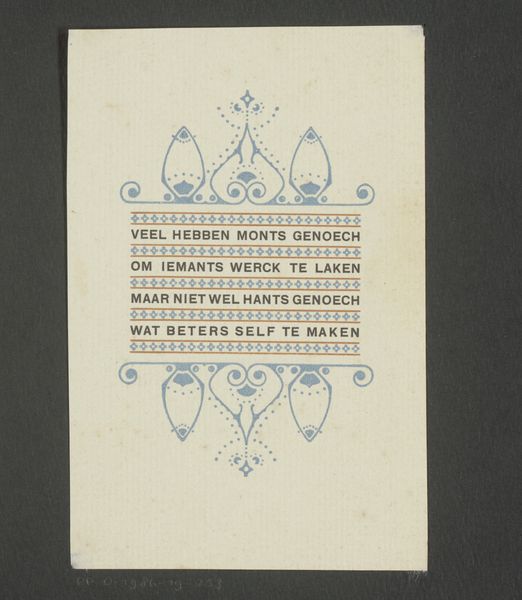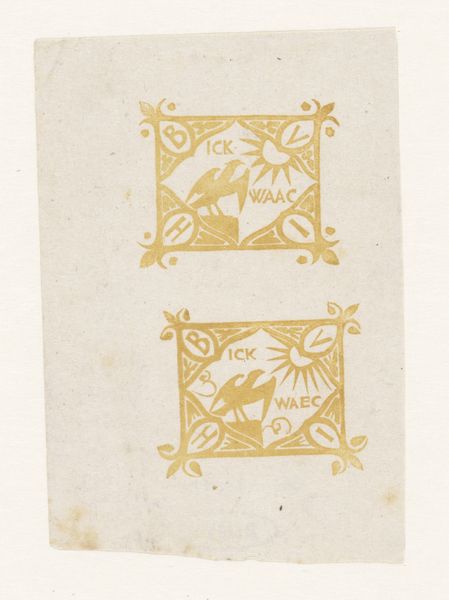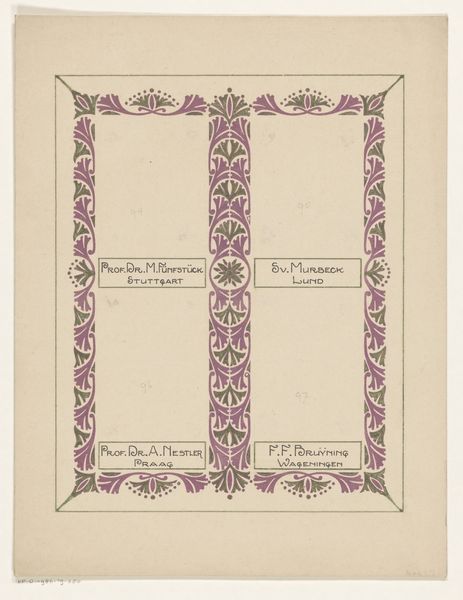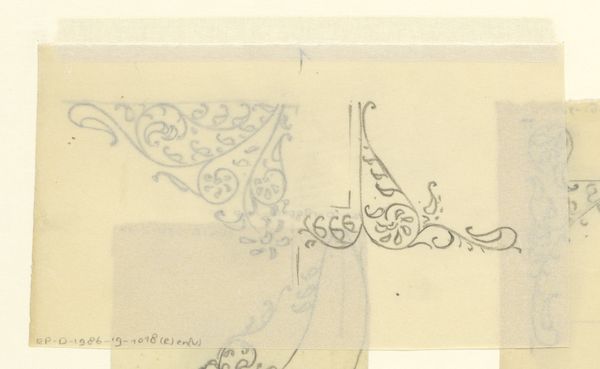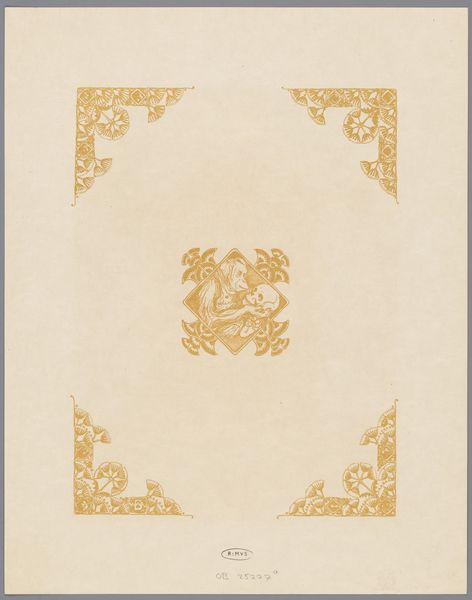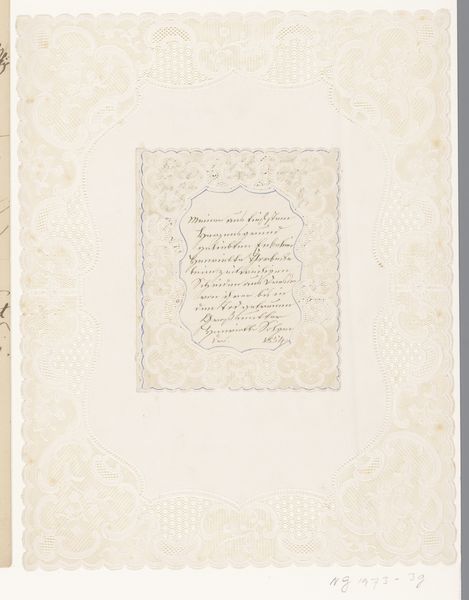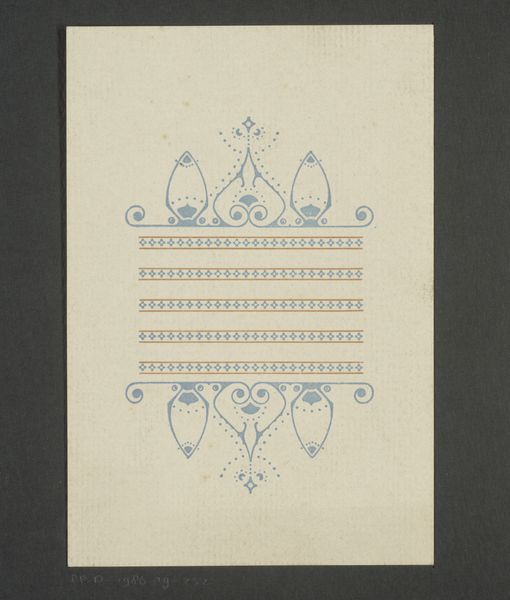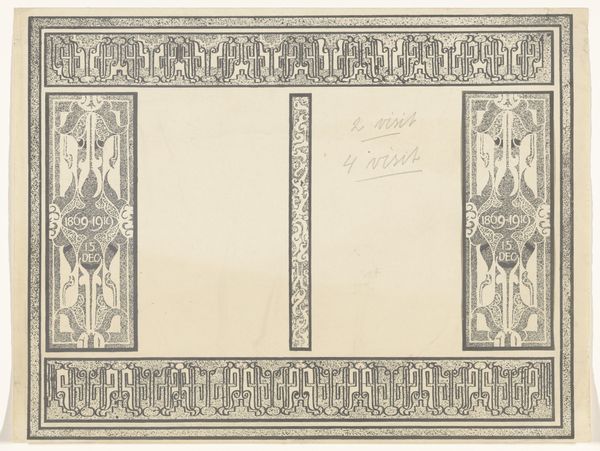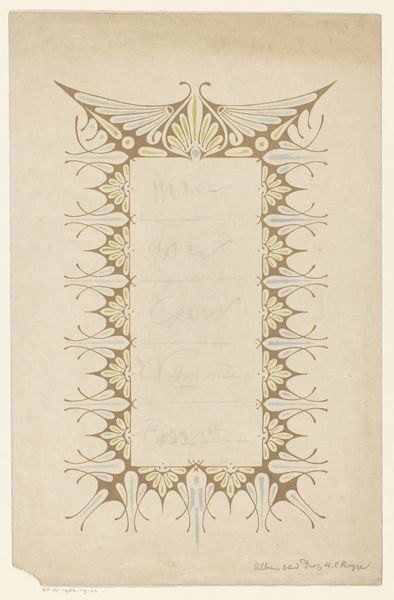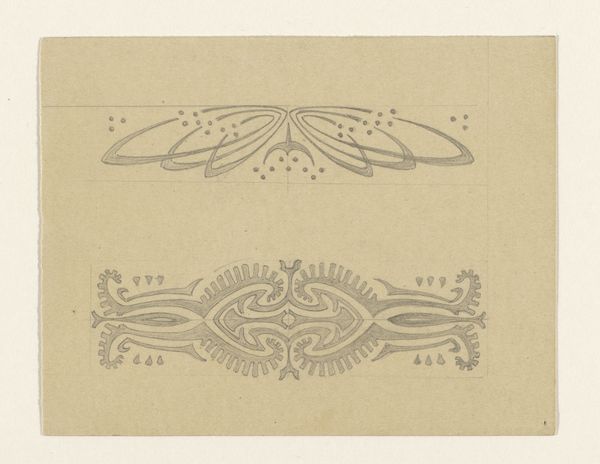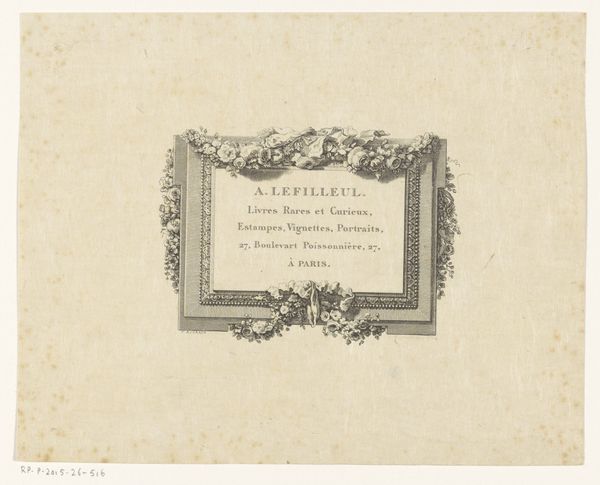
drawing, graphic-art, print, intaglio, paper, ink, engraving
#
drawing
#
graphic-art
# print
#
intaglio
#
old engraving style
#
paper
#
ink
#
geometric
#
ink colored
#
line
#
engraving
Dimensions: height 59 mm, width 98 mm
Copyright: Rijks Museum: Open Domain
Curator: What a delicate little thing! Editor: It is, isn’t it? This intaglio print, etched in ink on paper, is entitled "Vignet met spreuk", or "Vignette with Saying." Elias Voet Jr. created it sometime between 1878 and 1940. Curator: That timeframe is interesting; I’d expected something much earlier. And “saying”… hmm, it’s not just decorative, then? Is the script legible? Editor: Just about. The inscription, framed by the diamond, carries a rather gloomy sentiment: "Never think it is always amiss, remedy or improvement.” A somewhat melancholic, yet striving call towards betterment. Curator: Right, like a proverb of the period. So it’s designed as a symbolic device, using the geometry as containment and direction, that phrase as a little seed. The swirling ornamentation feels…almost protective around it. The patterns offer a comforting, even familiar embrace, a visual cue to reflect and connect with cultural understandings of misfortune and remedy. Editor: And what about its production? Consider the meticulous work required for such fine lines, the craftsman's expertise shaping meaning through material engagement. We need to see how this was distributed. Was it personal, functional, given away, kept for oneself? I bet you those social usages had significance we still can’t name! Curator: Exactly! Consider this was an era of burgeoning printing methods, that sort of hand-worked intaglio possesses a deliberately historical weight… a callback. Nostalgia for a supposedly more authentic past being made consumable in this industrial time. Editor: Point taken. Perhaps that longing for authenticity connects back to the proverb itself—seeking betterment not through new fabrication, but returning to time-tested remedies… clever. Curator: Indeed. Even a small work like this carries echoes of larger cultural anxieties and consolations. Editor: Absolutely. Each mark represents labor, intention, social desire. It prompts a whole universe of inquiry if we’re ready to look beyond mere aesthetic consumption.
Comments
No comments
Be the first to comment and join the conversation on the ultimate creative platform.

